Ahead of the Academy Awards, we’ve reviewed every short film in each category: Animation, Documentary, and Live Action. Here are the Best Animated Short nominees:
Letter to a Pig | France/Israel | 17 minutes
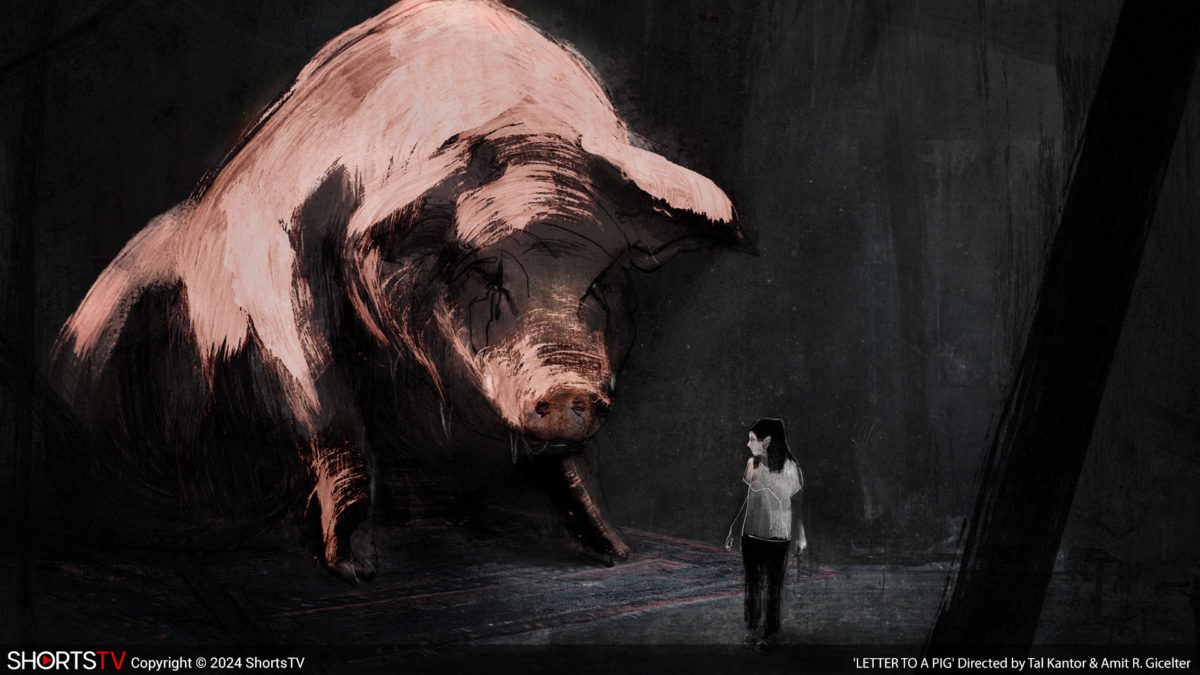
As Haim (Alexander Peleg) tells his tale of surviving the Holocaust as a boy hiding in a pigsty from Nazis, he mentions how one of the animals looked him in the eye as though it knew his plight. The pig oinked and moved to stand between Haim and his pursuer, altering the latter’s perception and ultimately helping to turn him away. Beyond just the idea this creature saved his life, though, Haim also acknowledges the conditioned feelings within his heart for his unlikely savior. He had been taught pigs were unclean. Vicious. Lesser beings fit for slaughter. He was taught they deserved his hate.
It’s a profound realization about mankind’s propensity for bloodlust and superiority. A realization that today’s generation of kids might not quite appreciate, considering they were lucky enough not to have lived through a genocide such as the one Haim survived. Thus writer-director Tal Kantor uses this tale to turn a mirror onto the children listening to those words. Most are bored or indifferent. One is kicked out of the classroom for making pig sounds. Alma (Moriyah Meerson), however, imagines the dynamic as metaphor. She projects that indoctrinated hate of pigs onto Haim’s story in a way that makes her the Nazi and a pig her victim.
Letter to a Pig is thus powerful simply by drawing the lines that connect our humanity and our evil. It’s one thing to recognize a victim by the fact that you too were victimized; it’s another to see a monster and recognize that monstrousness in yourself. It’s why the current situation between Israel and Palestine are so charged and, tragically, written off as “justified.” Too often we center the nightmare we endure at the hands of others in a way that blinds us to the nightmare we in turn force others to endure. That’s what happens when you dehumanize people and treat them like animals. Perhaps by seeing such beasts as a living creatures worthy of life, you’ll also see you’ve become the monster.
As for the animation: it’s… interesting. Partly ink wash. Partly sketchy to the point of being just outlines at times. Partly rotoscope where you can see Haim’s eyes and hands beneath the constantly moving color fields and lines above. The pig is where things really come together to create a fleshed-out figure utilizing all three techniques, as it’s the hero, victim, and metaphor all in one––the embodiment of mankind’s complex and imperfect nature.
B
Ninety-Five Senses | USA | 13 minutes
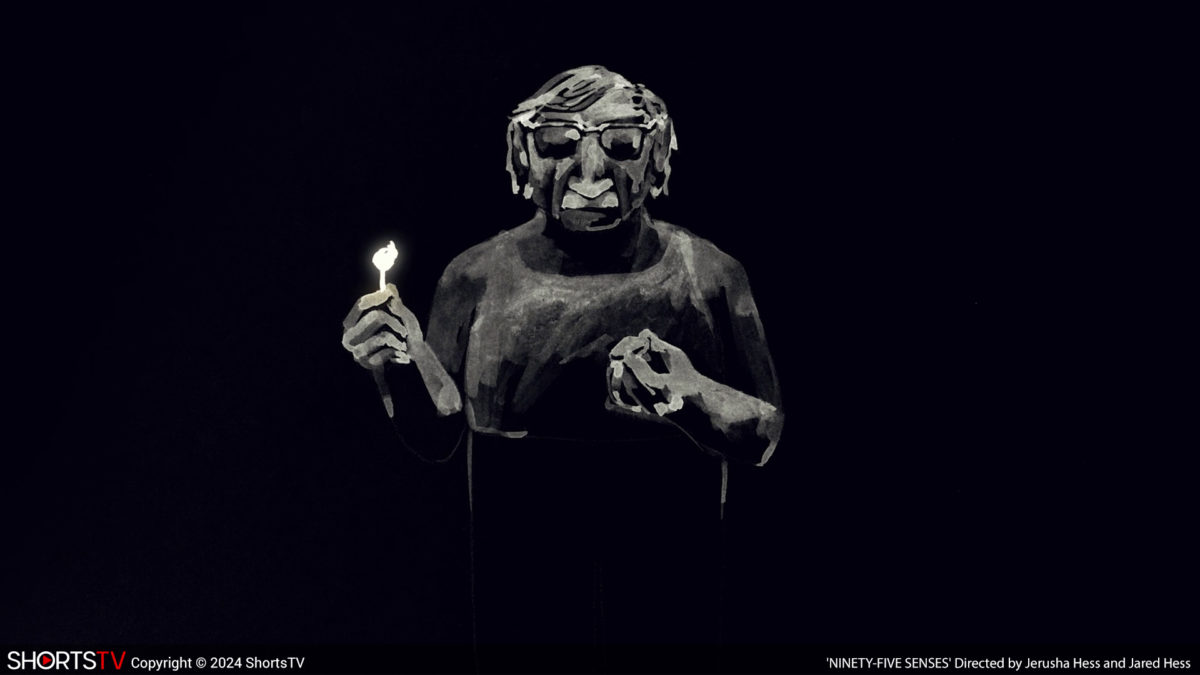
I’m not entirely sure what an “artist entrepreneur” is, but the mission statement from MAST––where the six teams of animators behind the stylistic smorgasbord that is Jerusha and Jared Hess’s Ninety-Five Senses were recruited from––seems like an interesting bit of artistic championing. Give artists an outlet to create and a vehicle to find an audience while allowing them a path towards financial stability. How can you not get behind that?
The Hesses surely did by divvying up the sections of Chris Bowman and Hubbel Palmer’s script about an old man named Coy (Tim Blake Nelson) reminiscing about the good moments and the bad that linger in his DNA courtesy of the myriad ways his five senses allowed them to become an integral part of who he is. How much he’s seen thanks to never owning a cellphone. How little he’s heard thanks to his father’s loud music. The smells and tastes he wishes to enjoy one more time before he’s gone, despite finding himself numb to the prospect once it arrives. The longing to touch and live again beyond concrete walls and steel bars.
It’s a really strong narrative that boils down the experience of life into its most potent memories all while deftly shifting between the nostalgia of the past and the pain of regret. Nelson lends the character an infectious energy at the start to get us thinking about our own lives before quite literally slapping us awake to the suffering too many have endured at the hands of those meant to protect us. How does that rage bubble and boil within? How does the resulting temper leave us victims to impulse? How does life fare afterwards when all we have left is remorse?
Add the kinetic animation and it’s easy to get swept away by Coy’s organic train of thought. Each sense grabs us and swirls us from image to image as the consistent style of the man himself grounds us back in the somber reality of where he currently finds himself on death row. We dance through recollections, nightmares, and fantasies, traveling between the cold hard truth of our demise and the wistful desire to hold onto the potential of a second life without any religious overtones turning a pragmatic view of mortality into a sermon. This isn’t a means towards penance or redemption, but a look at imperfection, contrition, and the reality that sometimes clarity comes a second too late.
B
Our Uniform | Iran | 7 minutes
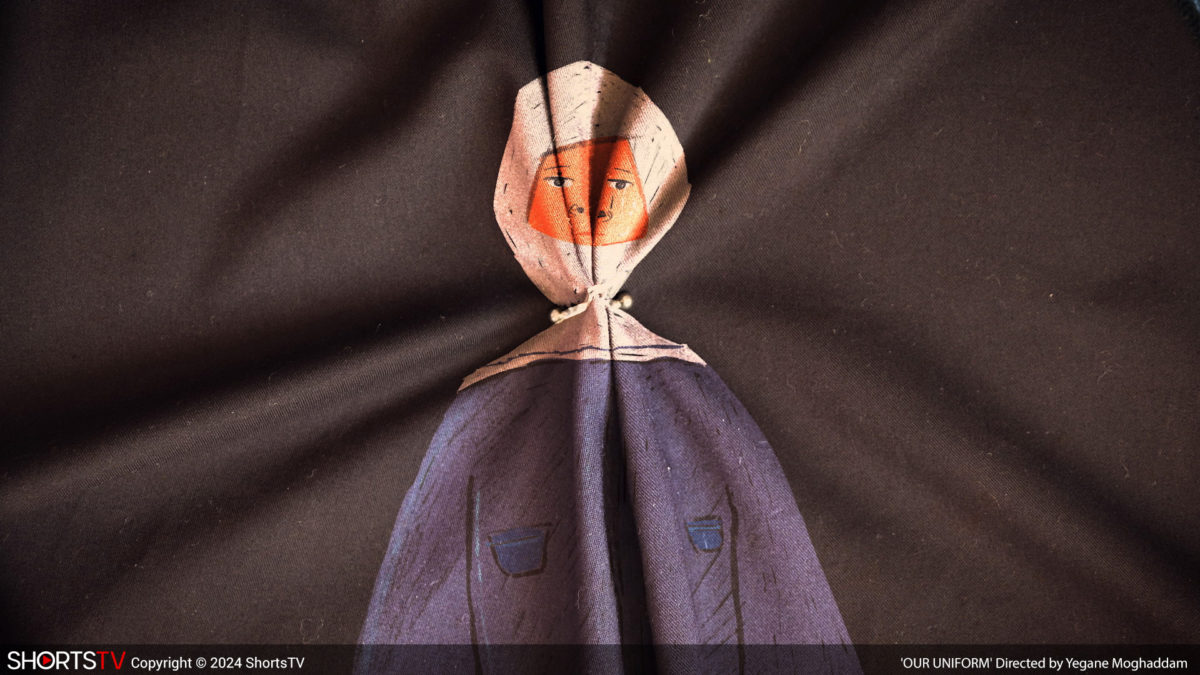
How wild that Yegane Moghaddam’s Our Uniform needs a disclaimer to tell people she isn’t mocking the hijab. Her film is literally an expression of how our clothes and style infer upon our identity and personality. She doesn’t say she hated wearing a hijab while growing up in Tehran. She doesn’t say those who choose to continue to wear one are wrong. The point is choice. An Iranian woman isn’t allowed one, and thus the purpose of that hijab becomes distilled down from an expression of piety or conservatism or modesty to just plain old boring conformity.
It’s a welcome message to express how creatively stifling a forced wardrobe can be and how something that seems creatively stifling might be the opposite if it weren’t co-opted by a totalitarian regime. Because beyond the hijab itself is the fabric from which it’s made. There are colors, textures, and designs that could be utilized just like with dresses, pants, and blouses. Moghaddam thus draws onto those materials to bring her true childhood stories to life. People unfold out of leg cuffs. Buses drive around buttons. Teachers roam along the winding curves of measuring tape. Her aesthetic is an absolute delight.
Moghaddam goes one step further, though. Rather than simply using different weaves and patterns as flat canvases, she wields the potential for wrinkles and folds into the narrative. This is most notably accomplished when talking about the difference between white-hooded young girls and black-hooded mature girls––shown by the color change and the crimp of fabric pushing her line of characters through puberty. Pockets become homes and sleeves are shorelines touching the sea that is a bare arm. We’re experiencing a tactile and inventive look into the possibilities and potential of the freedom to choose: a color, an article of clothing, and one’s own future.
B+
Pachyderme | France | 11 minutes
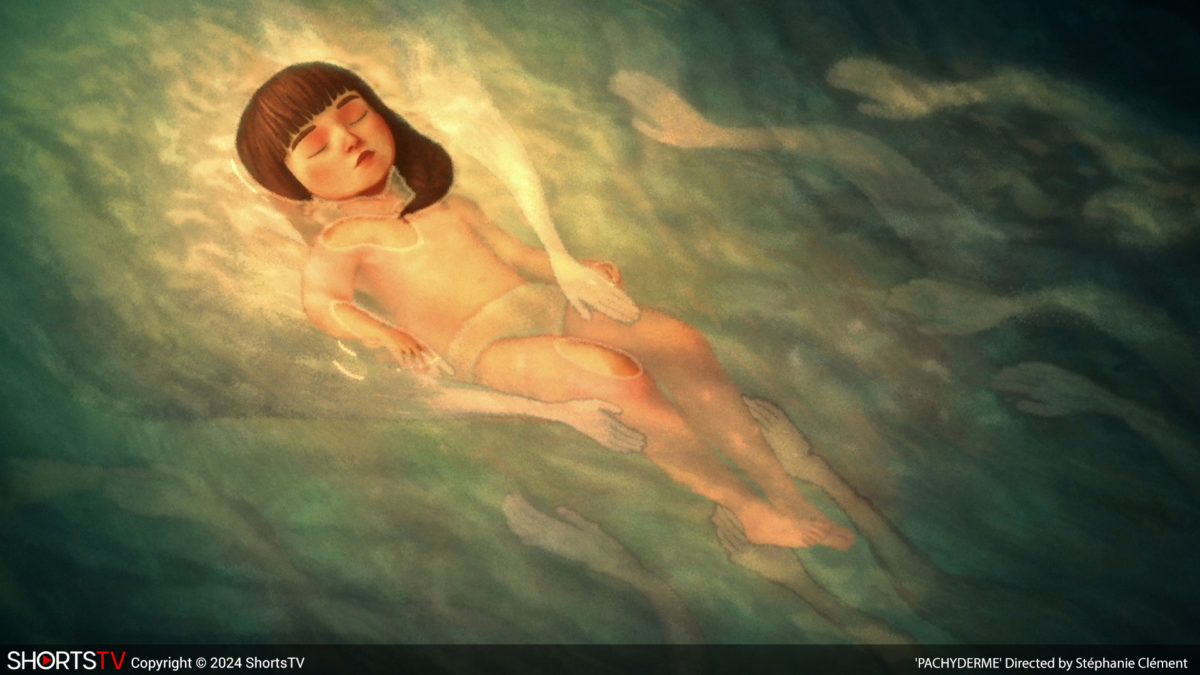
What a strong film. Structure, animation, atmosphere. Director Stéphanie Clément and writer Marc Rius are giving voice to unspeakable trauma through the conventions of a children’s story, both in its illustrative aesthetic and its lead’s perspective as a young girl with nothing to protect her but her imagination.
Pachyderme starts like any family visit would. The girl’s parents drive to her grandparents, enjoy dinner, and leave her there for ten days to enjoy some time alone. Louise admits that she doesn’t like this ritual, but we have no reason to assume those sentiments aren’t simply born from a bout of homesickness. That’s why the eyes in the wooden ceiling and the creaks of the floorboards give her nightmares. That’s why she pretends she can hide behind the flowers adorning the bedroom wallpaper.
Truth, however, is much sadder and darker. Moments from her memory are shrouded in shadows, yet clear as day through tone and close-up visual cues. Those board creaks become attached to something more than the unknown. Those eyes something more than fantastical beasts. These are merely the ways in which Louise copes with what’s happening. They are the only way she can get through to the other side without completely falling apart.
That Clément retains this separation between truth and perspective straight until the end only renders the metaphor and results more potent. Because the further along this story goes, the more obvious it becomes that we’re not seeing the full picture. Revealing it, however, would ruin the meaning behind everything it is that we’ve experienced. It would take the trauma away from its victim’s experience with it. We know what she’s saying and our hearts break from our inability to stop it. And despite its eventual end, its impact will ever go away.
No lake could ever be deep enough to drown that pain.
A-
WAR IS OVER! Inspired by the Music of John and Yoko | USA | 11 minutes
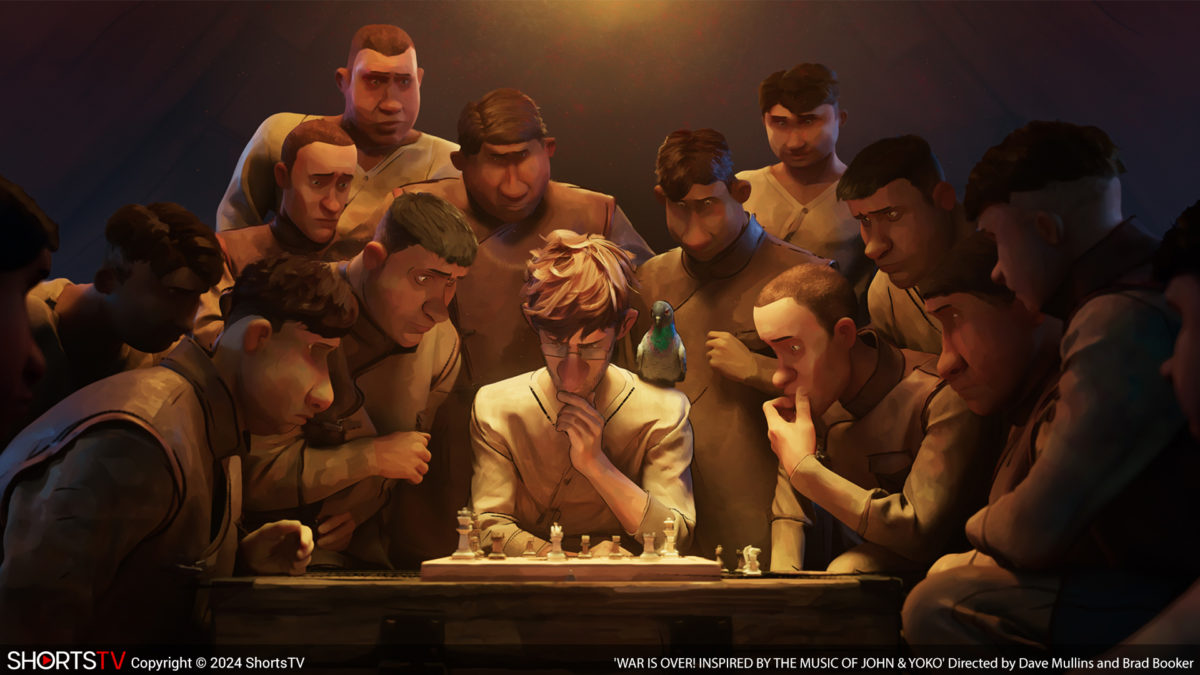
There might not be a more naïve war film than War is Over! Inspired by the Music of John and Yoko, but its animation is quite wonderful. It feels like rotoscoping with its authentic human motions while the sweeping cinematography lends a fantastic sense of place and energy, despite everything occurring a few hundred yards away in the trenches on either side of a WWI “no man’s land.” And between its two main enemy combatants lies a memorably emotive carrier pigeon who clandestinely ferries chess moves in lieu of official orders.
Dave Mullins’ animated short strives to match the emotional weight of 2005’s anti-war film Joyeux Noel, wherein men on either side agree they would rather be drinking a beer together than sticking a bayonet in the other’s gut. Unfortunately, there isn’t much time to deliver the nuance and context necessary to understand the motives behind that feature’s reprieve in just 12 minutes. So we get a cloyingly fanciful variation wherein a brutal battle (and it is rendered as brutal onscreen) can suddenly stop on a dime because the animosity was apparently all about following orders rather than deep-seated indoctrination.
I therefore fully understand why people are going for the jugular when talking about this film. It is a fantasy looking to solve a complex problem with a blanket statement that’s great for inspirational pop music, but extremely shallow when it comes to a realistic depiction of horror. Because war is certainly not over. America is currently bankrolling a genocide as I type. Thus, beyond the craft itself being worthwhile, the project’s script and message is as misguided as Democrats believing that voting for the status quo is a job well done––ensuring more people won’t die somehow cancels out their inability to prevent the deaths already happening.
C
Starting February 16, the 19th annual Oscar® Nominated Short Films releases, presented by ShortsTV, will debut in theaters only. To learn more about the participating theaters and how to purchase tickets, please visit www.shorts.tv/theoscarshorts.
